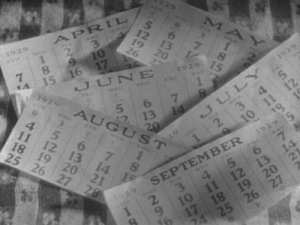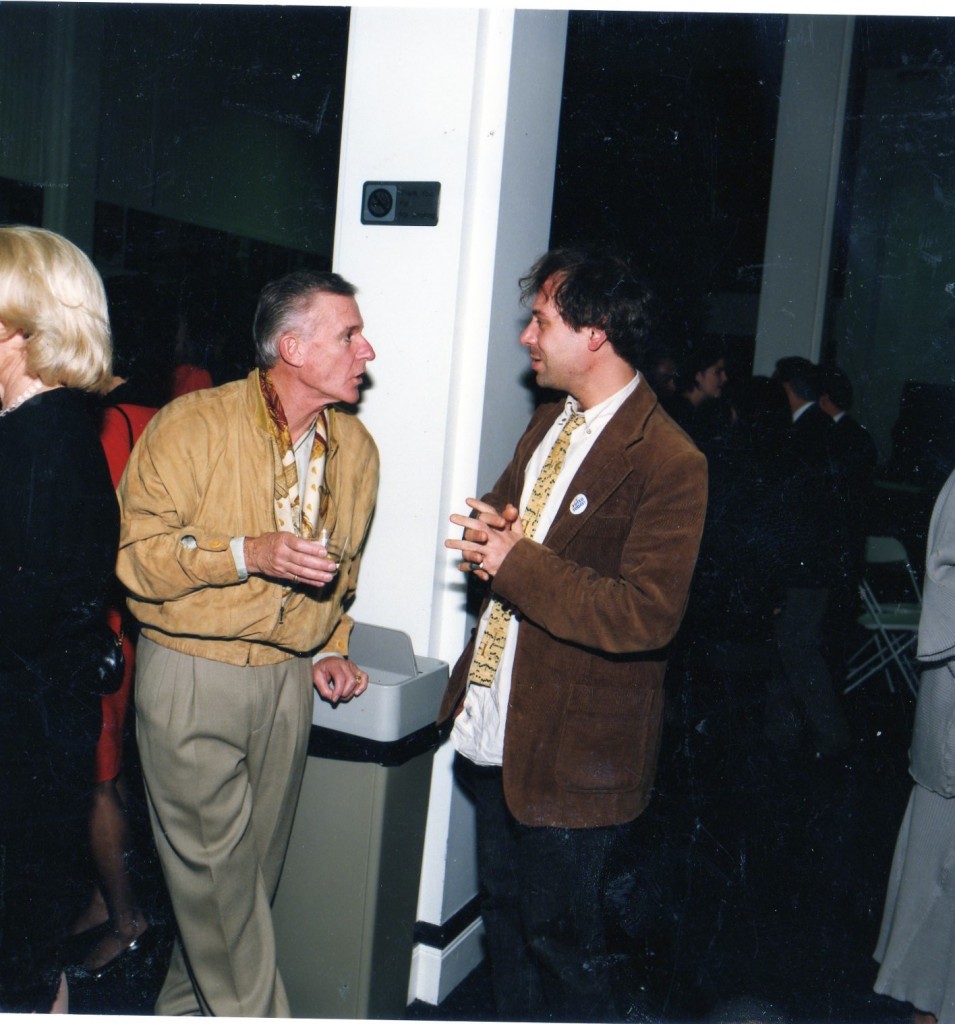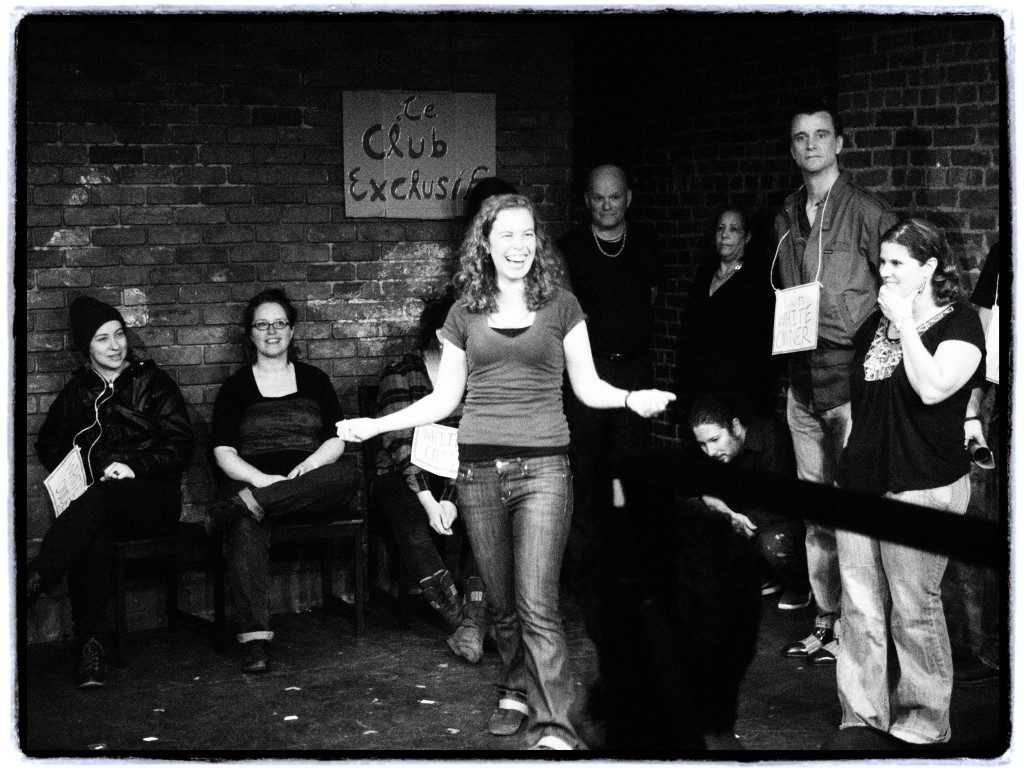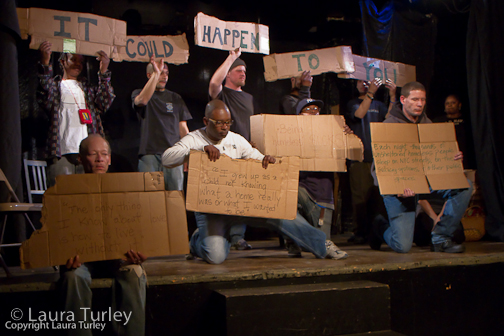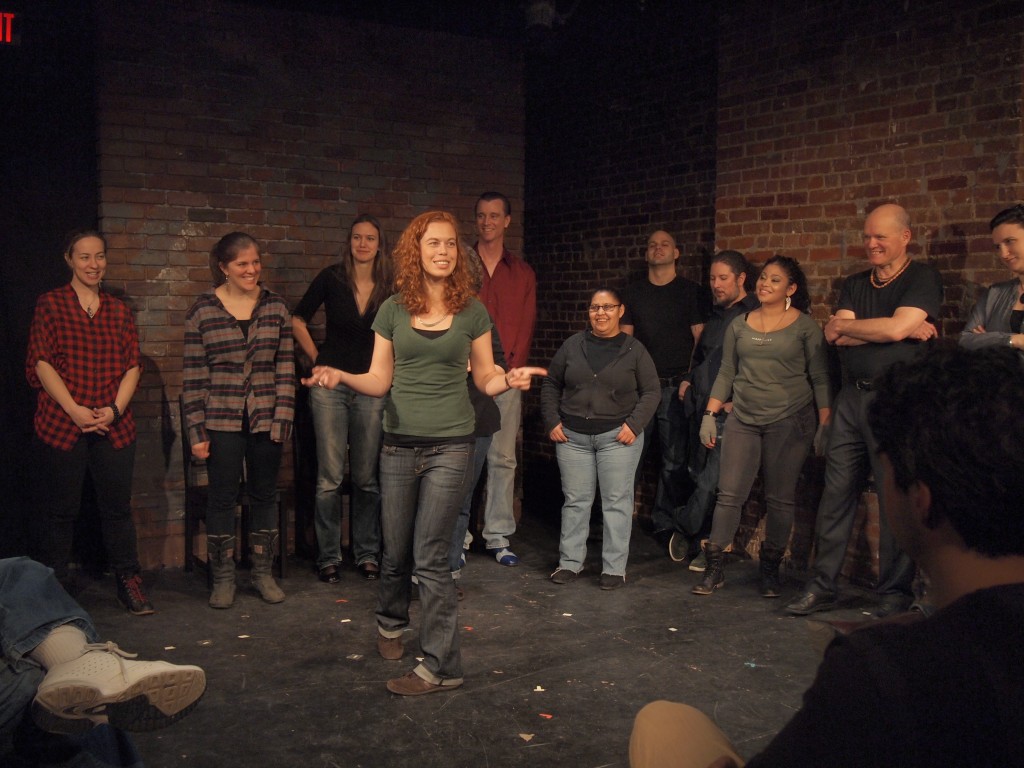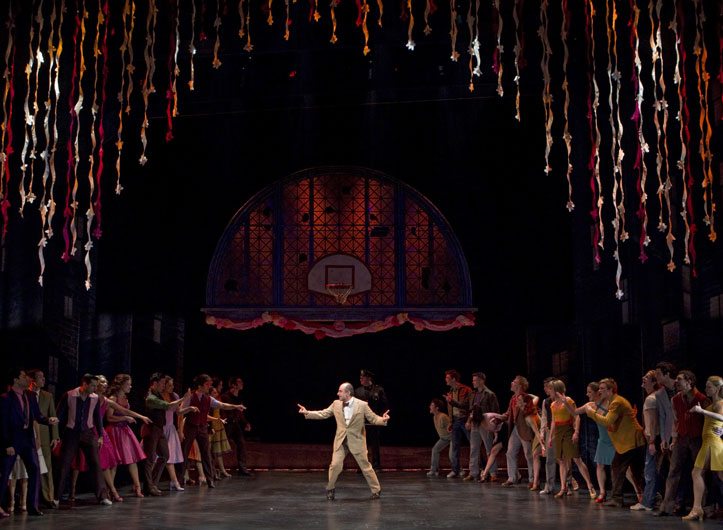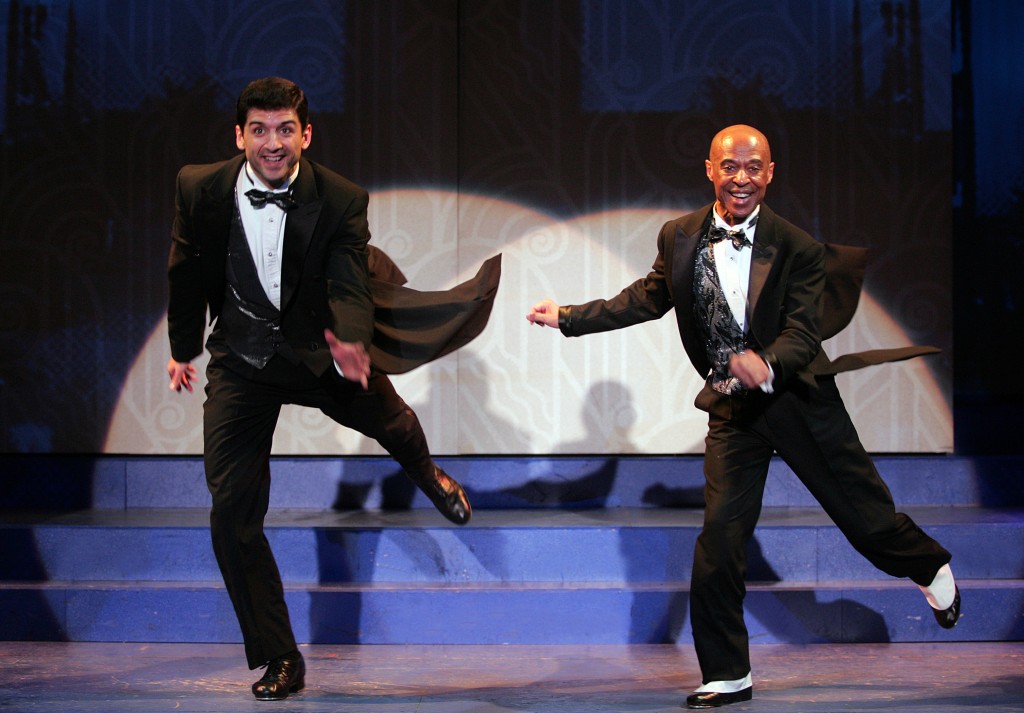
TONY YAZBEK AND ALDE LEWIS JR. TAP THE TITLE TUNE IN MY ONE AND ONLY AT THE GOODSPEED OPERA HOUSE. PHOTO BY DIANE SOBOLEWSKI.
My One and Only
Through June 25 at the Goodspeed Opera House.
Music & lyrics by George & Ira Gershwin. Book by Peter Stone and Timothy S. Mayer. Original staging and choreography by Thommie Walsh and Tommy Tune. Directed by Ray Roderick. Choreographed by Kelli Barclay. Produced by Michael Price. Associate Producer: Bob Allwine. Set Design by James Youmans. Costume Design by Robin McGee. Lighting Design by Paul Miller. Projection Design by Michael Clark. Sound by Jay Hilton. Hair & Wig Design by Robert-Charles Vallance. Orchestrations by Dan DeLange. Assistant Music Director: William J. Thomas. Production Manager: R. Glen Grusmark. Stage Manager: Bradley Spachman. Performed by Tony Yazbek (Billy), Gabrielle Ruiz (Edythe), Trent Armand Kendall (Rev. Montgomery), Khris Lewin (Prince Nikki/Achmed) Kirsten Wyatt (Mickey), Alde Lewis Jr. (Mr. Magix), Vasthy E. Mompoint & Victor J. Wisehart & Richard Riaz Yoder (New Rhythms) and the Ensemble of Nancy Rnee Braun, Brian Davis, Deanna Glover, Joe Grandy, Trent Armand Kendall, Matthew J. Kilgore, Drew King, Lea Kohl, Vasthy E. Mompoint, Jarran Muse, Kristyn Pope, Allison Kaye Rihn, Kristen J. Smith, Victor J. Wisehart and Richard Riaz Yoder.
“This boy is going to make me get out of my chair.”
It’s not often that an old-school musical gives you the same tingle up your spine as a suspense thriller. But even with all those familiar Gershwin melodies, a glorious sense of feverish anticipation is what My One and Only delivers.
The plot is ostensibly about a young aviator attempting to make the first solo flight across the Atlantic. There are nasty spies whacking good Americans on their noggins with wrenches, and an aquatic entertainer who’s gone missing—perhaps she’s in Persia?
But no, that’s not where the suspense lies. It comes with the announcement that “I’m dancing and I can’t be bothered now,” or the news that “we’re in the swim,” or that after that there’ll be some kickin’ away of clouds. It comes with a melody you know well, slowed to a rhythm you’ve never heard it at, and the realization that “Strike Up the Band” could be an emotional ballad.
Not to mention—wow!—that bit where the boy (high-flyer Billy) gets Mr. Magix (Alde Lewis Jr., a protege of the tap genius who first danced this part a quarter-century ago, Charles “Honi” Coles) out of his chair, for as flashy and assured a bit of male tapdance bonding as you may see in your lifetime. This number, which earns the right to illustrate and punctuate the musical’s title song, encompasses as much drama as it does dance. It hands down traditions. It puts insouciant youth in its place. It respects grumpy old men. It spreads joy to the rest of the cast and knocks the audience flat out.
This is the sort of musical you only attempt if you’re certain you can startle with the production numbers. They have to be sensational. At Goodspeed they are, and the dancers know it. They’re beaming. They’re showing off. They’re striking up the band and kickin’ the clouds away. They’re dancing and they can’t be bothered now. Not that we would think for a moment of bothering them.
The reason My One and Only doesn’t get revived all that often isn’t due to any weakness in script or score. It’s because, as it says in the subtitle the Goodspeed plasters on its programs and posters, this is a “tap dance spectacular.” The original production won two Tonys—for its star Tommy Tune, one of the greatest (and gangliest) tap dancers of his time, and for choreography. However funny and frisky and the action gets, it all has to be grounded by spectacular dances.
This was clearly the Goodspeed’s priority. I have great memories of the original My One and Only from over 30 years ago, and those memories are largely about specific star turns by well-known performers. Not having big names like Tommy Tune or Twiggy (for whom the lead roles were originally fashioned) to exploit, the Goodspeed has spread around the spectacle more democratically. For every sensational solo routine, there’s an equally showstopping ensemble number.
My One and Only uses tap shoes and Gershwin tunes as its foundation, but the show is as much a product of the 1970s as it is of the 1920s. It has a sense of adventure and discovery and amorous aggression that’s as applicable to the disco age as to the flapper one—and translates very neatly into our own times. The show’s moral is shared with a zillion Gershwin standards: It’s easy to get yourself down about something, but you don’t have to. Why not kick up your heels?
Half a dozen of the songs in My One and Only (“Funny Face,” “”High Hat,” “S’Wonderful,” “”In the Swim,” “He Loves and She Loves,” and the title tune) derive from a single Gershwin show, Funny Face. That show, and other Gershwin songs brought into the My One and Only score such as “Soon,” come from the same year in which My One and Only is set, 1927. For Funny Face, the Gershwins replaced “How Long Has This Been Going On?” with “He Loves and She Loves”; My One and Only uses both. The rest are a mixed bag, from 1921’s “Boy Wanted” to 1937’s Nice Work If You Can Get It—both songs which describe love in terms of gainful employment—with “Kicking the Clouds Away” (1925), “Blah, Blah, Blah” (1931) in between.
Placing old-fashioned positivistic anthems in a historical context which acknowledges real-life heroes gives My One and Only a kinship to one of the biggest hits in the Goodspeed’s history, Annie. The shows were created only about five years apart. Annie is set in 1933 and features an appearance by Franklin Delano Roosevelt. My One and Only is set in 1927 and makes frequent mention of Charles “Lucky” Lindbergh.
The show’s also blissfully self-aware, as only an anachronistically sunnily dispositioned, nostalgia-driven show can be: A plot progression is dismissed with “Ah, that’s first act business.” There are fart jokes to offset all those starched dress shirts, and gospel wails to integrate the Tin Pan alley atmosphere. When the recurring vocal trio known as The New Rhythms (Vasthy E. Mompoint, Victor Wisehart and Richard Riaz Yoder) emerge at one point with a hilariously cheesy prop to illustrate a sky voyage, they acknowledge it deliriously: “It’s a plane! On a stick!” There’s some serious intelligence at work in the complicated choreography, multi-obstacled romantic plotline and rapid-change set design of this show, but it would be half as impressive without such inspired silliness.
There are slight similarities between My One and Only and The Boyfriend (which the Goodspeed revived in 2005). Both use seaside frolics for big production numbers, and the lovers in each meet at upscale parties. But My One and Only is jazzier and hipper and saucier, less overtly parodic. It’s less interested in capturing a lost era than it is in amplifying what was cool about it.
Tap dancing is surprisingly still spryly cool, even in this age of shoegazing and raves. In the fleet-footed lead role of Captain Billy Buck Chandler, Tony Yazbeck wisely doesn’t even try to ape the role’s originator Tommy Tune. He’s more of a sweaty, athletic, Gene Kelly-esque tapper, and he leaps into each dance as if prepared to tap ‘til he drops. The object of Billy’s affections, swimming ace Edythe Herbert (Gabrielle Ruiz), is required to sing more than she dances, and does so in a confident, personable cabaret style that really invigorates otherwise familiar love songs. Vaudeville yocks are provided courtesy Billy’s tomboy flight mechanic Mickey (Kirsten Wyatt, invoking the great Betty Garrett, not to mention Deborah Walley in Beach Blanket Bingo) and villainous Prince NikolaiErraclyovitch Tchatchavadve (Khris Lewin), whose thick accents transforms “romance” into “ruh-myenz” and “piece de resistance” into “piss of resistents.”
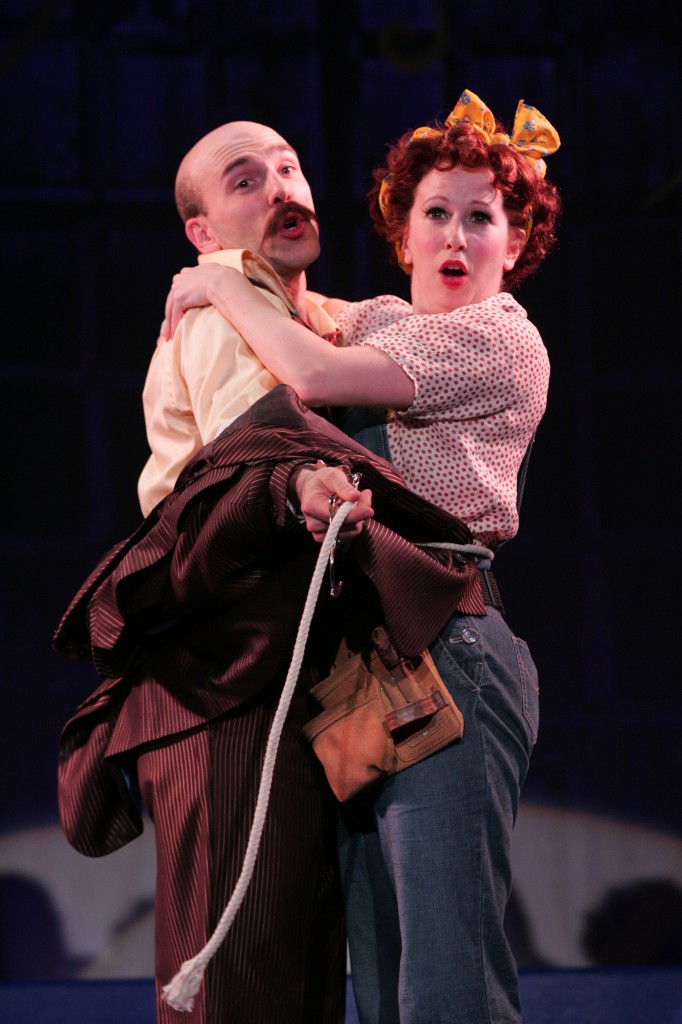
KHRIS LEWIN AND KIRSTEN WYATT TIE UP LOOSE ENDS AS COMIC RELIEF IN MY ONE AND ONLY. DIANE SOBOLEWSKI PHOTO.
The Goodspeed literally frames this succession of dance, crooning and comedy routines with a purposely boxy set design and quickchanging photo and film images to set the scenes. There are more projections in this production than in a Yale School of Drama thesis project. It all makes for a snappy presentations that goes beyond exhilarating into exhausting. The Goodspeed currently has Cutman, a new musical about championship boxing, playing down the road from the Opera House at the Norma Terris Theater, but it’d have to hit hard to be any punchier than My One and Only.
This show is a welcome reminder that a Gershwin tune stands for more than a pleasant melody. The Gershwins fueled a revolution, one that still spins 85 years or so later.
My One and Only will make you get out of your chair.



